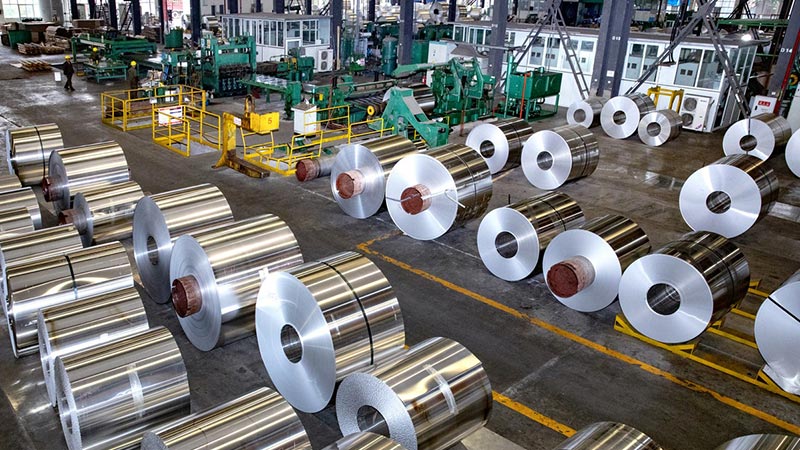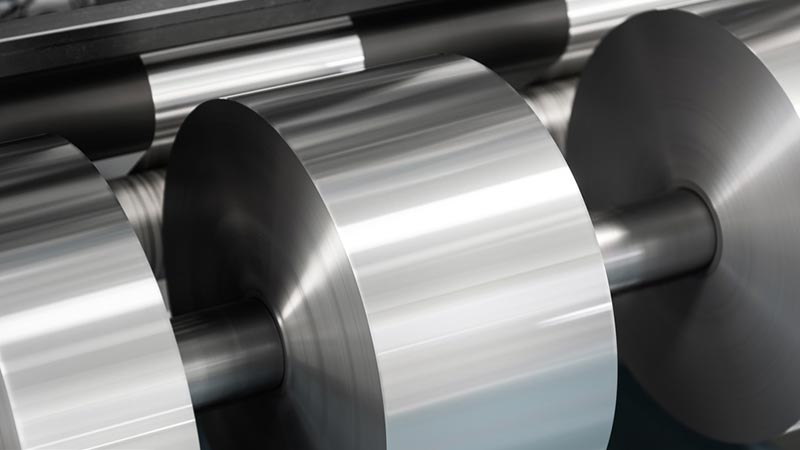First:What is stainless steel?
Stainless steel is a corrosion-resistant alloy steel, mainly composed of iron, chromium (at least 10.5%), carbon, etc. Chromium forms a dense oxide film on the surface of stainless steel, giving it excellent corrosion resistance.
1.What are the main characteristics?
Corrosion resistance: The oxide film formed by chromium can effectively prevent rusting.
High strength: possessing excellent mechanical properties.
High temperature resistance: Some stainless steels can maintain stability at high temperatures.
Easy to process: can be processed through various techniques.
Appearance: Smooth surface, commonly used for decoration.
2.What are the common types?
Austenitic stainless steel: such as 304 and 316, with good corrosion resistance and non-magnetic properties.
Ferritic stainless steel: such as 430, with high chromium content and magnetic properties.
Martensitic stainless steel, such as 410, has high hardness and magnetism.
Dual phase stainless steel: such as 2205, with both austenitic and ferritic characteristics, high strength, and corrosion resistance.
3.What is the application field?
Architecture: used for curtain walls, handrails, etc.
Food processing: used for equipment and containers.
Medical devices: used for surgical instruments and implants.
Chemical industry: used for reaction vessels and pipelines.
Automobiles: Used for exhaust systems and decorative parts.
4.How to maintain and upkeep?
Regular cleaning: Keep the surface clean to prevent dirt accumulation.
Avoid scratches: prevent damage to the surface oxide film.
Use specialized cleaning agents: Avoid using highly corrosive cleaning agents.
Summary
Stainless steel is widely used in multiple fields due to its corrosion resistance, high strength, and aesthetic properties. Understanding its types and characteristics helps with rational selection and use.

Second:Attention should be paid when purchasing stainless steel
1. Clarify the purpose
Application scenario: Determine the usage environment of stainless steel (such as food processing, construction, chemical industry, etc.) in order to select the appropriate type of stainless steel.
Performance requirements: Whether corrosion resistance, high temperature resistance, high strength and other characteristics are required.
2. Choose the appropriate type of stainless steel
Common types:
304 stainless steel: universal type, good corrosion resistance, suitable for food, medical and other fields.
316 stainless steel: with stronger corrosion resistance, suitable for chemical and marine environments.
430 stainless steel: Low cost, suitable for general decorative purposes.
201 stainless steel: Low price, but poor corrosion resistance, suitable for low demand scenarios.
Special requirements: For high-temperature environments, high-temperature resistant stainless steel (such as 310S) can be selected.
3. Check the material and composition
Component identification: Ensure that key components such as chromium and nickel in stainless steel meet standards (such as 304 stainless steel containing 18% chromium and 8% nickel).
Material certification: Suppliers are required to provide material certification (such as quality assurance certificates or inspection reports).
4. Surface treatment
Surface condition: Select surface treatment methods according to requirements, such as 2B (cold rolled glossy surface), BA (mirror surface), No.1 (hot rolled surface), etc.
Appearance inspection: Ensure that the surface is free of defects such as scratches, cracks, rust spots, etc.
5. Specifications and dimensions
Thickness and width: Choose the appropriate thickness and width according to the usage requirements.
Tolerance range: Confirm whether the tolerances of dimensions such as thickness and width meet the requirements.
6. Supplier Qualification
Reputation and Qualifications: Choose qualified and reputable suppliers to avoid purchasing inferior products.
After sales service: Understand the supplier's after-sales policies, such as returns and exchanges, technical support, etc.
ZEBRA Steel is a large steel production and processing factory in China. Welcome to inquire
7. Price Comparison
Market situation: Understand the current market prices and avoid price traps that are too high or too low.
Cost effectiveness: Taking into account quality, price, and after-sales service, choose products with high cost-effectiveness.
8. Testing and acceptance
On site testing: Use testing tools (such as spectrometers) to verify the material composition.
Acceptance criteria: Conduct acceptance according to the contract or industry standards to ensure that the product meets the requirements.
9. Environmental Protection and Certification
Environmental standards: Ensure that stainless steel meets environmental requirements (such as RoHS certification).
Industry certifications such as ISO, ASTM, etc. ensure reliable product quality.
10. Transportation and Storage
Transportation protection: Ensure that stainless steel coils or plates are not damaged during transportation.
Storage conditions: Avoid humid and corrosive environments to prevent rusting.

Third:What issues should be noted when importing stainless steel products
1. Understand import policies and regulations
Tariffs and tax rates: Query the import tariffs and value-added tax rates of stainless steel coils, and calculate costs in advance.
Regulatory conditions: Confirm whether special permits or compliance with specific standards (such as environmental protection, quality certification) are required.
Anti dumping duties: Some countries or regions may impose anti-dumping duties on stainless steel, so it is necessary to understand in advance.
2. Choose the appropriate type of stainless steel
Material requirements: Select the appropriate stainless steel type (such as 304, 316, 430, etc.) according to the application.
Composition standards: Ensure that the chromium, nickel, and other components of stainless steel comply with international standards such as ASTM, JIS, EN, etc.
3. Verify supplier qualifications
Supplier reputation: Choose qualified and reputable foreign suppliers.
Quality certification: Suppliers are required to provide documents such as Material Certification (MTC) and testing reports.
Collaboration history: Prioritize selecting suppliers with experience in collaboration to reduce risks.
4. Sign the contract
Clear specifications: specify the material, thickness, width, surface treatment, and other requirements of the stainless steel coil in the contract.
Price terms: Clearly state the price and payment method (such as letter of credit, T/T, etc.).
Delivery terms: Determine the delivery method (such as FOB, CIF, etc.) and delivery time.
Acceptance criteria: agree on acceptance criteria and testing methods.
5. Arrange logistics and transportation
Transportation method: Choose a reliable logistics company to ensure transportation safety.
Packaging requirements: Ensure that the stainless steel coil packaging is intact to prevent damage during transportation.
Insurance: Purchase transportation insurance for goods to cope with accidental losses.
6. Prepare customs clearance documents
Essential documents:
Commercial Invoice
Packing List
Bill of Lading
Certificate of Origin
Material Test Certificate
Special documents: If necessary, provide quality certification, import license, etc.
7. Customs clearance and inspection
Customs broker: Choose a professional customs broker to assist with customs clearance.
Customs inspection: Cooperate with customs to inspect goods and provide necessary documents.
Inspection and quarantine: If necessary, conduct quality inspection and quarantine.
8. Acceptance and testing
Arrival inspection: Check whether the outer packaging of the goods is intact and whether the quantity is consistent with the contract.
Quality inspection: Use professional equipment (such as spectrometers) to detect material composition and ensure compliance with requirements.
Record issues: If there are any problems, communicate with the supplier in a timely manner and retain evidence.
9. Tax and financial processing
Pay taxes and fees: Pay customs duties, value-added tax, and other fees on time.
Financial reconciliation: Verify payment, shipping, insurance, and other expenses to ensure accuracy.
10. Storage and use
Storage conditions: Store stainless steel coils in a dry and ventilated environment to avoid rusting.
Usage plan: Reasonably arrange usage to avoid long-term backlog.
Summary
When importing stainless steel coils, special attention should be paid to policies and regulations, supplier qualifications, contract terms, logistics transportation, customs clearance documents, quality testing, and other aspects. By thorough preparation and strict control, it is possible to ensure a smooth import process and obtain high-quality stainless steel coils.





 English
English